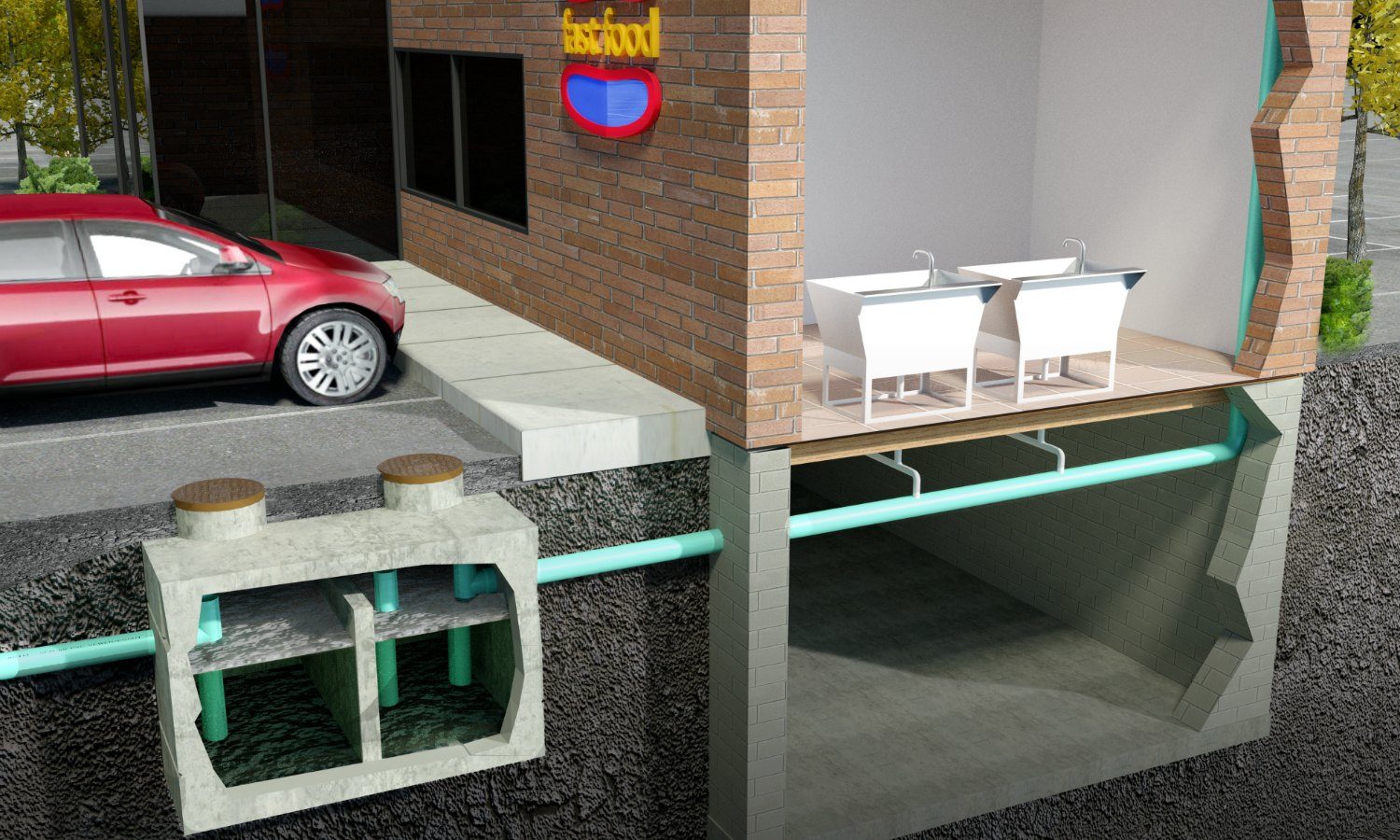Grease Trap Install and Repair
A typical home doesn’t have a grease trap, so you need to be sure not to put grease down the drain.
Of course, a small amount of grease will almost always enter the drain when you are scrubbing out skillets and other cooking items. The key is to limit the amount of grease entering the drain to a bare minimum. Grease in residential home drains can cause serious problems. You’ll notice that it will start to drain slowly until it’s only draining at a trickle. That’s when you have a problem. Commercial kitchens, on the other hand, often have grease traps. For most of these kitchens, this is actually a requirement. Here’s what you need to know about grease trap install and repair for commercial grease traps.
What is a Grease Trap?
FOG is a commonly used acronym in the food business. It stands for fat oil, and grease.These are substances that most local governments regulate. They have restrictions on how you can dispose of such materials. That’s where grease traps enter the picture. Most local governments require restaurants and other food businesses to install grease traps in the drains of their sinks. These grease traps, also known as grease interceptors, capture the FOG before it drains out of the sink into the business’s wastewater system. Simply put, grease traps not only help restaurants protect their own plumbing, but they also prevent fat, oil, and grease from reaching the city water system. Most grease traps work much the same way. They make the water drain more slowly out of the sink, giving it time to cool off, so that the FOG congeals and is left behind. The water then exits the sink, travels through the restaurant’s plumbing, and enters the city water system without carrying any fat, oil, or grease along with it.
Broken Grease Trap
A broken commercial grease trap can cause serious problems. For starters, it can negatively affect the restaurant’s sink and plumbing system. But, even more disastrously, it can affect the local municipal sewer systems. To prevent costly repairs, it’s essential to fix your broken grease trap ASAP. A broken or faulty grease trap can even lead to your establishment being hit with hefty fines. That’s why it’s so important not only to keep your commercial grease trap in tiptop shape, but also to keep records of maintenance and repairs.
Grease Trap Repair
Regular maintenance is the key to a smooth functioning grease trap. Take the time to clean it out and make basic repairs. It will continue working well for years on end. If it does become broken, it’s time to call in grease trap repair. Trained professionals have the tools and skills it takes to repair your grease trap in no time at all. For grease trap repair, your plumbing professional will inspect the grease trap itself as well as surrounding plumbing before starting work. The final product is either a repaired grease trap or the recommendation to buy and install a new one.
Grease Trap Installation
Buying a new grease trap for your commercial (or residential) kitchen isn’t an area that you should cut corners. It pays to hire the right service so that you get a top-quality finished product. Professional grease trap installation results in a longer-lasting grease trap that works well for years on end. Hiring the right grease trap installation prevents problems and expensive repairs down the line as well as reduces your risk of being fined by the local government. Our plumbers will install a new grease trap in your commercial or residential building in a timely, expedient manner.
Other Plumbing Problems
A broken grease trap can quickly lead to other serious plumbing problems. It’s important to have the rest of your plumbing system inspected during your commercial grease trap repair. We can inspect your entire plumbing system to identify if there are any problems. Then we can recommend the proper repairs to have your system back in tiptop shape in short order. Remember that the grease trap is only one aspect of keeping FOG out of the city water supply.
How to Prevent Problems
There’s a lot that you can do as a business owner to prevent problems with your grease trap. Chief among these is cleaning and maintenance. Inspect your grease trap on a regular basis to ensure you catch developing problems in the bud. Cleaning is equally important. Most grease traps should be cleaned every month or month and a half at a minimum. Follow the specific cleaning instructions for your grease trap model to know how often to clean. Note that while cleaning a grease trap yourself is possible, it’s often a messy, unpleasant, time-consuming task if you don’t have professional tools and skills. That’s why so many businesses benefit from scheduling a regular grease trap cleaning with a professional plumbing service. We’ll be in and out in no time at all. The time-savings and quality of the service will pay off big time in the long run.
Don’t Wait
It’s easy to put grease trap cleaning and maintenance off. But it will sneak up on you before long. It’s far better to tackle the problem head on today rather than wait until it becomes serious. Talk to our plumbing professionals for your grease trap install and repair on commercial and residential buildings. We also offer grease trap cleaning and maintenance. Our options for commercial buildings include inspection as well as cleaning and repairing not only the grease trap, but the rest of the building’s plumbing. Another option is to rebuild. Instead of repairing an old grease trap that will likely break again or replacing it with a new model, we can rebuild your old model so that it works as good as new. Please give us a call for your grease trap install, repair, cleaning, maintenance, or inspection.

